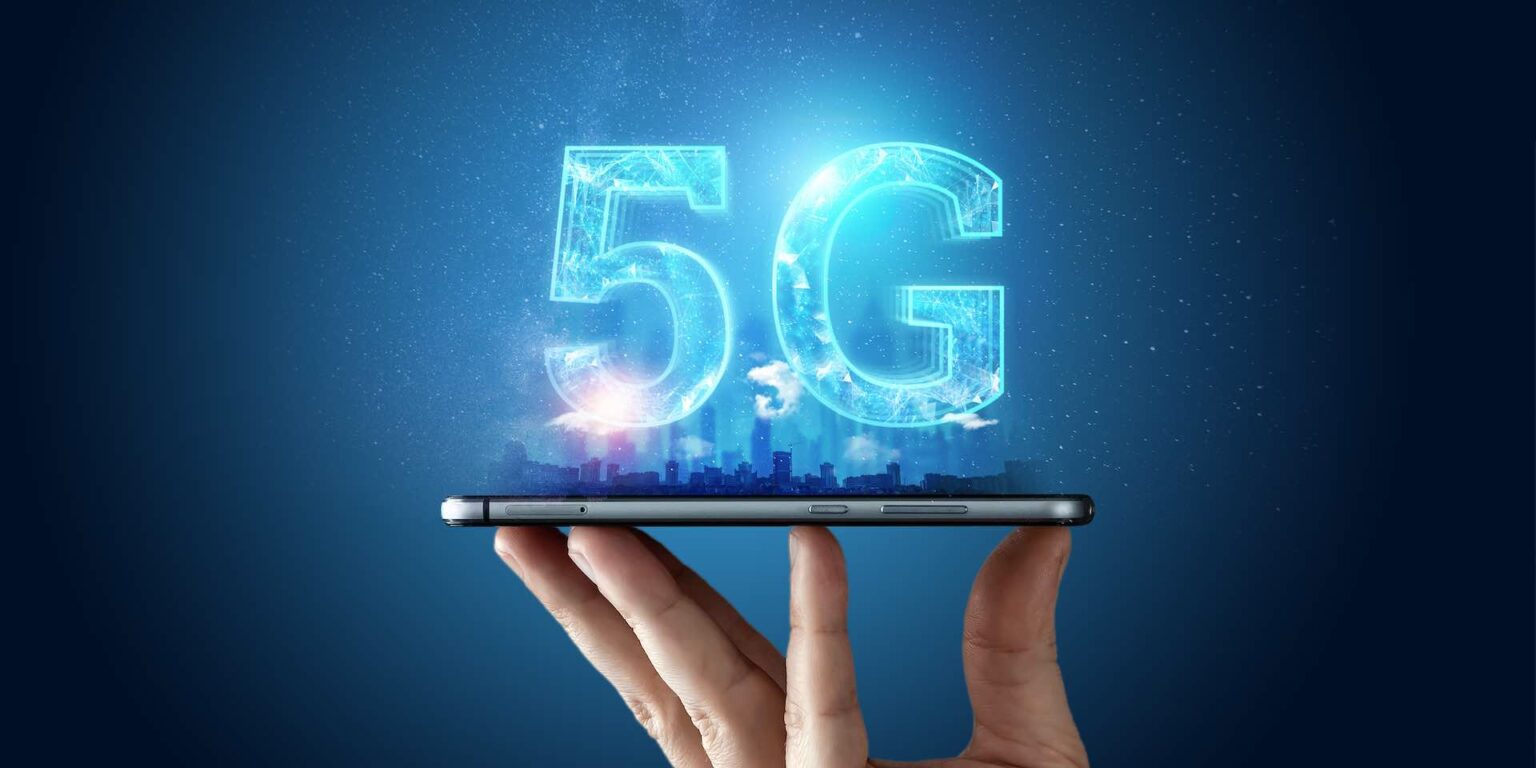In the world of mobile technology, we’ve come a long way from the days of 1G, where analogue phones were a luxury, to the groundbreaking advancements of 4G, which brought about the era of smartphones and mobile internet. Now, 5G has arrived, promising to revolutionize how we connect, communicate, and interact with the digital world. But what exactly is 5G, and why should you care? In this blog post, we’ll explore the ins and outs of 5G technology, its benefits, challenges, and the potential it holds for transforming industries and daily life.
What is 5G?
5G, or the fifth generation of mobile networks, is the latest standard in wireless technology. It’s designed to provide faster speeds, lower latency, and greater capacity than its predecessors, making it a significant leap forward from 4G LTE. The main goal of 5G is to support the growing demand for data and connectivity, driven by the increasing number of devices and the rise of the Internet of Things (IoT).
Key Features of 5G
- Ultra-Fast Speeds:
- 5G offers download speeds of up to 10 Gbps, which is 100 times faster than 4G. This means you can download an HD movie in seconds and enjoy seamless streaming without buffering.
- Low Latency:
- Latency refers to the time it takes for data to travel from one point to another. 5G reduces latency to as low as 1 millisecond, enabling real-time communication and applications like online gaming, autonomous vehicles, and remote surgery.
- Increased Capacity:
- 5G can support up to 1 million devices per square kilometre, compared to 4G’s limit of around 100,000. This increased capacity is crucial for the expanding number of connected devices, including smart home gadgets, wearables, and industrial sensors.
- Network Slicing:
- 5G allows operators to create virtual networks tailored to specific applications or industries. For example, a healthcare provider could have a network slice optimized for low-latency communication, while a smart city might have a slice dedicated to IoT devices.
- Enhanced Reliability:
- 5G networks are designed to be more reliable, with advanced error correction and redundancy features. This reliability is essential for mission-critical applications where network failure is not an option.
The Evolution from 4G to 5G
To understand the significance of 5G, it’s important to compare it with its predecessor, 4G. While 4G brought about a mobile revolution, enabling high-speed internet, video streaming, and mobile apps, 5G takes these capabilities to the next level. Here’s a quick comparison:
| Feature | 4G LTE | 5G |
| Speed | Up to 100 Mbps | Up to 10 Gbps |
| Latency | 30-50 milliseconds | 1 millisecond |
| Device Connectivity | 100,000 devices/sq. km | 1 million devices/sq. km |
| Use Cases | Mobile internet, streaming | IoT, autonomous vehicles, smart cities |
How Does 5G Work?
5G operates on three different frequency bands: low, mid, and high. Each of these bands has its strengths and challenges:
- Low-Band Spectrum:
- Offers wide coverage and better penetration through obstacles like walls, but has relatively lower speeds (similar to 4G).
- Mid-Band Spectrum:
- Provides a balance between coverage, speed, and latency. It’s expected to be the backbone of 5G networks.
- High-Band Spectrum (mmWave):
- Delivers ultra-fast speeds and low latency but has limited coverage and struggles with penetration through obstacles. It’s ideal for densely populated urban areas and specific applications like stadiums and airports.
5G networks rely on a dense network of small cell towers, which are smaller and closer together than traditional cell towers. This infrastructure is necessary to support the higher frequencies and ensure consistent coverage, especially in urban environments.
The Impact of 5G on Industries
The introduction of 5G is set to revolutionize a wide range of industries, enabling new applications and business models. Here are some key areas where 5G is expected to have a significant impact:
- Healthcare:
- 5G’s low latency and high reliability make it ideal for telemedicine and remote surgery. Doctors can perform surgeries from thousands of miles away with precision, thanks to real-time video and data transmission.
- Automotive:
- Autonomous vehicles rely on 5G for real-time communication with other vehicles, infrastructure, and cloud-based services. This enables safer and more efficient transportation systems.
- Manufacturing:
- 5G enables smart factories where machines and robots communicate seamlessly, improving efficiency, reducing downtime, and enabling predictive maintenance.
- Entertainment:
- 5G enhances virtual reality (VR) and augmented reality (AR) experiences by providing the high-speed, low-latency connections required for immersive content.
- Smart Cities:
- 5G supports the vast number of IoT devices needed to create smart cities, where everything from traffic lights to waste management systems is connected and optimized for efficiency.
- Agriculture:
- 5G-powered IoT devices can monitor soil conditions, weather, and crop health in real-time, enabling precision farming and increasing crop yields.
Challenges and Concerns
Despite its potential, the rollout of 5G is not without challenges. Here are some of the key concerns:
- Infrastructure Costs:
- Building the dense network of small cells required for 5G is expensive and time-consuming. Telecom companies need to invest heavily in infrastructure, which may lead to higher costs for consumers.
- Spectrum Availability:
- 5G requires access to a wide range of spectrum, including low, mid, and high bands. The allocation of spectrum is regulated by governments, and delays in spectrum auctions can slow down 5G deployment.
- Security Risks:
- The increased number of connected devices and the complexity of 5G networks create new security challenges. Cybersecurity measures must be updated to protect against potential threats.
- Health Concerns:
- Some people are concerned about the potential health risks of exposure to higher-frequency radio waves used in 5G. However, research by health organizations, including the World Health Organization (WHO), indicates that 5G is safe within the established exposure limits.
- Digital Divide:
- The deployment of 5G is likely to be uneven, with urban areas receiving coverage before rural areas. This could exacerbate the digital divide, leaving some communities without access to the benefits of 5G.
The Future of 5G
The rollout of 5G is still in its early stages, but its impact is already being felt in various sectors. As more devices and industries adopt 5G, we can expect to see innovations and use cases emerge. In the coming years, 5G will likely pave the way for the development of 6G, which promises even faster speeds, lower latency, and more advanced applications.
In conclusion, 5G is not just an incremental upgrade from 4G; it’s a transformative technology that will shape the future of connectivity and communication. As 5G networks continue to expand, they will unlock new possibilities for businesses, governments, and consumers, driving innovation and economic growth. Whether it’s enabling autonomous vehicles, improving healthcare, or connecting smart cities, 5G is set to revolutionize the way we live and work.
Frequently Asked Questions (FAQ)
1. How can I check 5G in my area?
- To check if 5G is available in your area, you can visit your mobile carrier’s website and look for a coverage map. Many carriers also offer mobile apps that can show you the network coverage in real time. Additionally, websites like Ookla’s Speedtest and OpenSignal provide tools that can help you check 5G availability and speed in your specific location.
2. Is 5G now available?
- Yes, 5G is available in many parts of the world, including the United States, Europe, Asia, and other regions. However, the availability and coverage vary depending on the country and mobile carrier. In urban areas, 5G deployment is more advanced, while rural areas may still have limited or no 5G coverage.
3. What is 5G technology and how does it work?
- 5G technology is the fifth generation of mobile networks, designed to offer faster speeds, lower latency, and greater capacity than previous generations. It works by utilizing a combination of low, mid, and high-frequency bands, along with a dense network of small cell towers, to deliver high-speed data and reliable connections. The key features of 5G include ultra-fast speeds, low latency, increased capacity, and the ability to support many connected devices.
4. Where was 5G first launched in the world?
- 5G was first launched in South Korea in April 2019, making it the first country to roll out a nationwide 5G network. Shortly after, the United States, China, and several European countries launched their 5G networks.
5. What is the next generation of cellular networks?
The next generation of cellular networks beyond 5G is known as 6G. While 5G is still being rolled out globally, research and development for 6G have already begun. 6G is expected to bring even faster data speeds, lower latency, and more advanced capabilities, such as integrating AI-driven applications directly into the network infrastructure. It could enable immersive experiences like extended reality (XR), holographic communications, and advanced IoT applications.
6G is projected to operate on even higher frequency bands, including the terahertz spectrum, which could support data speeds of up to 1 terabit per second (Tbps). The development of 6G is still in the early stages, with commercial deployment expected around 2030.
Next Gen Mobile Network in India
India is actively preparing for the future of cellular networks, with significant investments in 5G infrastructure. The country’s major telecom operators are expected to roll out 5G services across various cities and regions, aiming for widespread availability. Discussions about 6G have also begun, with the government and industry players collaborating on research initiatives to ensure that India is at the forefront of this technological evolution.




